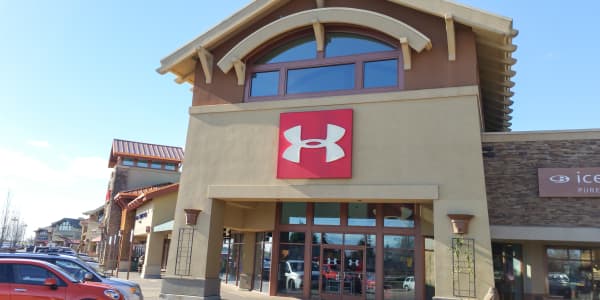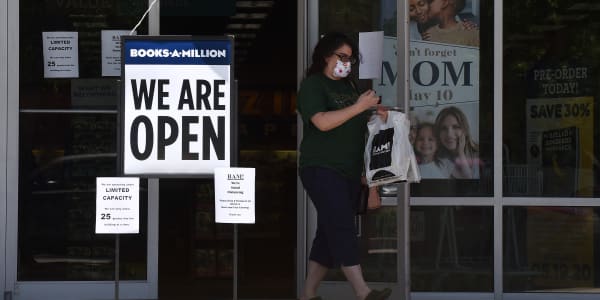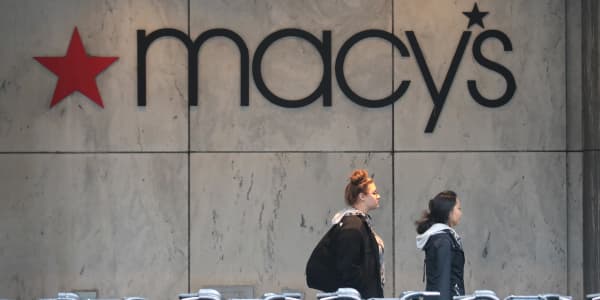For most people, the neighborhood Blockbuster is fast becoming a distant memory. But in Eagle River, Alaska, they're still going strong.
Generally, when a chain shuts down, it shuts down completely. But every now and then a few locations survive, whether because they're vital to their community, independently run shops where the owners have no intention of following the parent company's lead or via new owners who want to leave a porch light on as they consider a new approach.
You'll often have to travel a little out of your way to find some of these businesses, but if you're suffering pangs of nostalgia, it's a good way to step back in retail's timeline. Here's some retailers who were "all the rage" in their heyday and are now struggling to survive.
Tower Records
If you wanted music in the '80s or '90s, odds are you frequented a Tower Records at least once. The company's Times Square flagship store was a pop-culture hub, loaded with music, movies, books and gadgets, and was always filled with tourists. And in the early 2000s its scan-and-listen stations, letting people hear samples of CDs before they bought them, were considered cutting-edge. At its peak, there were more than 200 locations. In 2004 it filed for bankruptcy, though, a victim of the download era of music, and underwent a reorganization. The company recovered but in 2006 filed for bankruptcy a second time and liquidated all stores — almost.
In Japan the stores broke off from the main company and lived on — and still do today. Located in the Shibuya district of Tokyo, the flagship location was given an overhaul in 2012, increasing its floor space to 5,000 square meters. The store is loaded with music from artists you can't find on Amazon, as well as a café. The chain, in fact, seems to be thriving in the Far East
Bennigan's
Bennigan's was one of the kings of casual dining, but in 2008 all 150 corporate-owned locations shut down when the restaurant's parent company filed Chapter 7 bankruptcy. A few months later Atalaya Capital Management announced plans to buy the brand for $1 million and laid out a smaller footprint for new locations. There are presently 15 in the United States, eight in Mexico and Central America, four on the island of Cyprus and four in the Middle East. The new(ish) owners are still expanding that footprint. The most recent U.S. location opened in early July in Kentucky.
RadioShack
RadioShack's second bankruptcy in two years resulted in the shutdown of more than 1,000 stores earlier this year. The end wasn't exactly nigh (500 dealer-owned stores remained), but it wasn't looking good for the electronics retailer, which generated nearly $6.3 billion in revenue at the company's peak in 1996. In mid-July, though, Kensington Capital Holdings bought the chain for $15 million and is looking to ensure it stays alive in the brick-and-mortar space. On July 10 it opened its first new store, in Baraboo, Wisconsin, since the bankruptcy filing.
PoFolks
In the 1980s there were 102 of these Southern food-themed restaurants in 17 states, with individual restaurants boasting annual revenues of $2 million a year. In fact, things were moving along so quickly and so well, a number of celebrities began backing the chain, including actor Burt Reynolds and country singer Conway Twitty. But in 1988 the chain filed for bankruptcy after it claimed revenues fell $11.5 million short of total costs during the fourth quarter of 1987. The company blamed the shortfall on a poor expansion plan. Soon afterward the homestyle restaurants largely disappeared. Today eight remain — seven in Florida and one in Alabama — still serving old favorites, like "Fried Green T'maters," "Blue Ribbon Chicken Dinners" and "Kuntry Fried Steak."
dELIA's
Some familiar chains from the past have given up their brick-and-mortar presence but live on in another capacity. Launched in 1993 by two graduates of Yale, dELIA'S was the favorite apparel store of many college women in the late 1990s and 2000s. In 2006 the chain had more than 250 stores, generating sales of $258 million. It was acquired by Alloy in 2003 for $50 million, then sold again in 2013, for just $3.7 million, to HRSH Acquisitions. A bankruptcy filing in 2014 led to the shutdown of all physical locations, but the company reopened as an online retailer eight months later. It's still alive in the online world, but no brick-and-mortar stores have yet reopened.
Blockbuster
Netflix did a good job of killing off most Blockbusters, which once numbered roughly 9,000 across the United States, generating $5.9 billion in revenues. And Dish Network's 2011 purchase of the chain pretty much finished off the job. But there are still 11 Blockbusters open across the country. Seven of those are in Alaska, three are in Oregon and one in Texas. The stores in Oregon and Texas get by due to relatively inexpensive rent and a loyal customer base. In Alaska, internet can be expensive, eliminating streaming as an option for some families. And DVD rentals via mail take time (and aren't as plentiful as they once were before Netflix began focusing more on its streaming strategy). That makes brick-and-mortar local stores a popular option.
Filene's Basement
Arguably one of the first victims of the changing retail market, Filene's (famous for its "Running of the Brides" event, held annually from 1947 to 2011) was a Massachusetts-based clothing chain with 46 locations and a fiercely loyal bargain-hunting customer base. Competition and the economic crisis of 2011 proved to be too much, though, forcing the chain to liquidate all physical stores. Four years later Filene's resurfaced as an online retailer — and even brought back its once-a-year deep discount on wedding gowns. This time around, though, the brides don't run, they click.




